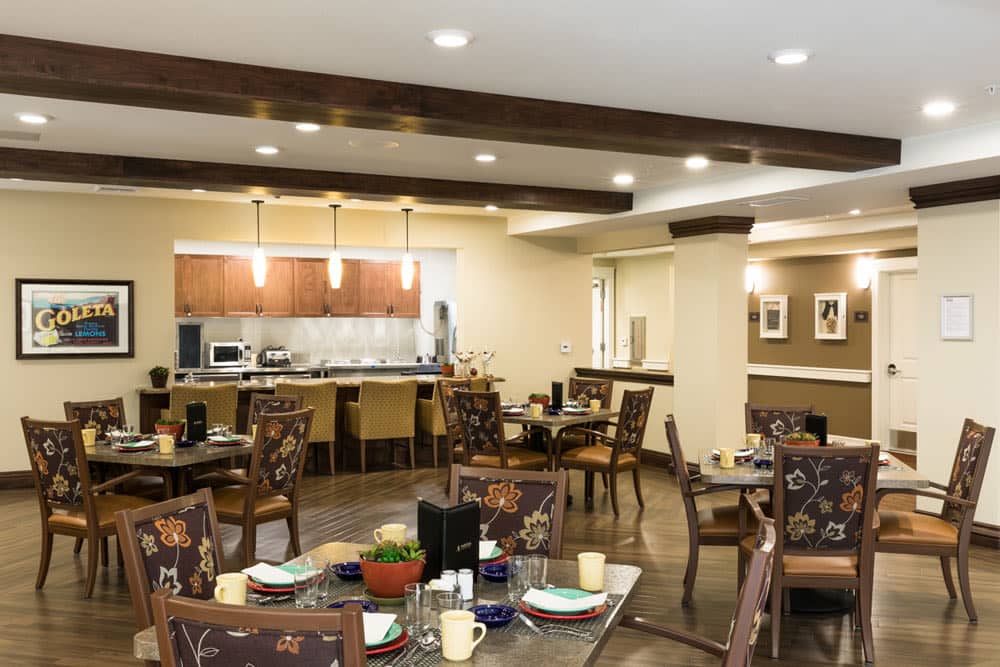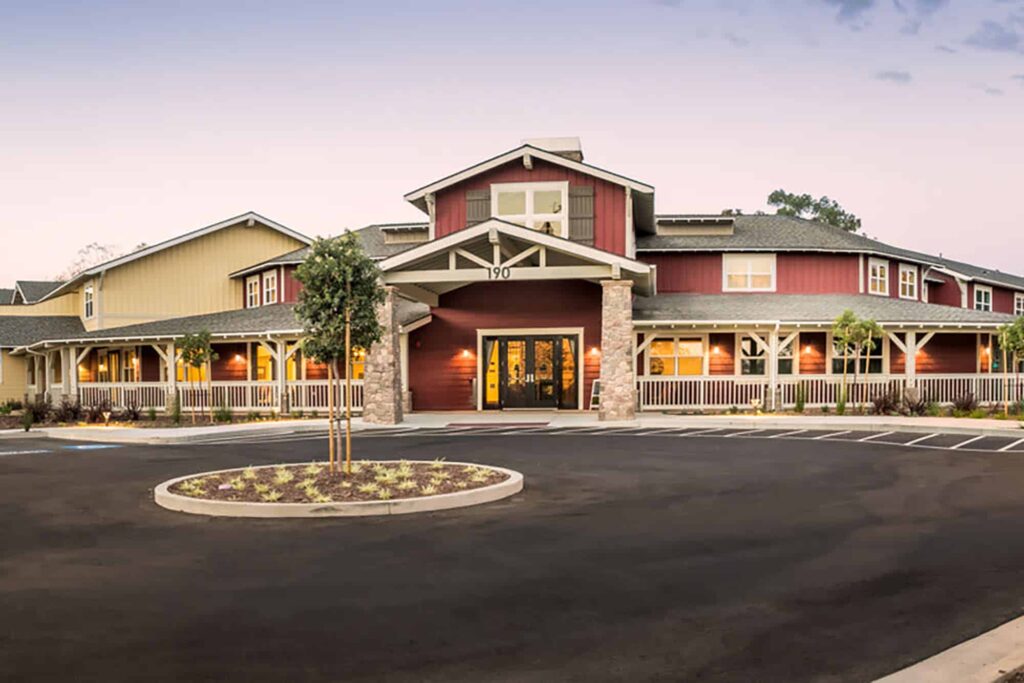How Much Does Assisted Living Cost?
When considering the cost of assisted living at Westmont of Santa Barbara, you might be surprised by the factors influencing the price tag. Each element is essential in determining the overall expenses from location to level of care and amenities.
But what about specialized services or optional extras? Understanding the breakdown of costs at Westmont of Santa Barbara and exploring payment options can provide a clearer picture of what to expect.
So, before you make any decisions, it’s crucial to grasp the full scope of expenses involved in assisted living at Westmont of Santa Barbara.
Key Takeaways
- Staff ratio impacts cost significantly, with lower ratios leading to higher expenses for personalized care.
- Location influences costs, with urban areas generally more expensive than rural settings.
- Amenities, care levels, and additional services offered can affect the overall cost.
- Optional amenities like luxury upgrades and specialized care can lead to additional expenses.
- Payment options, including government programs and long-term care insurance, can help reduce financial burden.
Factors Affecting Cost
When considering the cost of assisted living, numerous factors come into play that can greatly impact the overall expenses. Two important elements that significantly influence the cost are the staff ratio and facility size.
The staff ratio, which refers to the number of caregivers available per resident, is vital in determining assisted living costs. Facilities with lower staff ratios often provide more personalized care, increasing expenses. Conversely, more extensive facilities with higher staff ratios may offer more affordable options but could result in less individual attention for residents.
Additionally, facility size is a key factor in cost determination. Larger facilities with extensive amenities like swimming pools, fitness centers, and expansive common areas tend to have higher costs than smaller, more intimate settings.
The size of the facility also impacts the staff ratio, as more extensive facilities may require more staff to accommodate the residents adequately.
Understanding how staff ratio and facility size affect assisted living costs can help individuals make informed decisions when selecting a facility that meets their needs and budget.
Location Impact
Examining the impact of location on assisted living costs is crucial when assessing potential facilities. Regional disparities play a key role in determining the cost of assisted living, with some areas being more costly due to high demand or specific amenities available. The cost of living influence is another vital factor to bear in mind, as areas with higher overall living expenses tend to have pricier assisted living facilities. Here are some key aspects to keep in mind regarding the impact of location:
- Supply and Demand: Areas with a higher demand for assisted living facilities may experience increased costs due to limited availability. Additionally, government assistance programs like Medicaid can help offset some of these expenses.
- Urban vs. Rural: Urban areas generally have higher assisted living expenses than rural locations.
- Geographic Variances: Different regions within the same state can have varying costs based on local economic factors.
- State-by-State Variations: Assisted living costs can differ significantly between states, with some states having much higher average expenses than others.
- Neighborhood Specifics: Even within the same city, costs can vary based on Santa Barbara’s neighborhood’s desirability and amenities. This may also include the scenic surroundings, sports facilities, the local climate and other attractions where senior living residents can tour or roam around.
Level of Care
Understanding the level of care provided by assisted living facilities is crucial when evaluating the services they offer. Care levels in assisted living communities usually vary from basic assistance with daily activities to specialized care for individuals with specific medical needs. It’s vital to inquire about the specific care levels available at each facility to make sure that they align with your loved one’s requirements.
Additionally, the qualifications of the staff members, including their training, certifications, and experience in caring for seniors, greatly influence the quality of care provided, guaranteeing personalized attention and customized care plans.

Amenities Included
When considering assisted living costs, examining the amenities included in the base price is important. These amenities often vary depending on the facility but commonly include services like housekeeping, meals, transportation, and social activities. Understanding what amenities are encompassed in the base cost and what additional services may incur extra charges is vital for budgeting and selecting the right assisted living community for your needs.
Inclusive Amenities Overview
Inclusive amenities play a crucial role in enhancing residents’ quality of life and overall well-being within assisted living facilities. These amenities are carefully crafted to cater to residents’ diverse needs and preferences, providing a comprehensive living experience.
Here is an overview of the inclusive amenities offered in assisted living facilities:
- Dining Options: Residents can enjoy nutritious and delicious meals prepared by professional chefs in communal dining areas, fostering social interaction and creating a restaurant-style dining experience. Assisted living menus are designed to meet residents’ dietary needs and preferences, offering a variety of daily selections catering to different tastes and special dietary menu choices.
- Recreational Activities: To keep residents engaged and active, a variety of recreational activities, such as fitness classes, arts and crafts sessions, gardening clubs, and outings to local attractions, are organized.
- Wellness Programs: Many facilities offer wellness programs that include yoga classes, meditation sessions, and health education seminars to promote physical, mental, and emotional well-being.
- Transportation Services: Scheduled transportation services are provided for residents to attend medical appointments, shopping trips, and social outings, ensuring their independence and stay connected with the community.
- Housekeeping and Maintenance: Housekeeping services are included to guarantee that residents live in a clean, safe, and comfortable environment without worrying about daily chores.
Cost of Additional Services
Understanding the pricing structure for these additional services is essential for budgeting purposes. Some facilities may offer a la carte pricing, allowing residents to pay only for their needed services. In contrast, others may have bundled packages that encompass a variety of services for a set fee. Before committing to a specific assisted living facility, it’s advisable to carefully review the cost breakdown of additional services to guarantee they align with your budget and requirements.
Additionally, considering the implications of vision problems in individuals with Alzheimer’s can provide valuable insights into the importance of personalized care and support for early Alzheimer’s vision problems in seniors.
Additional Services
When considering the cost of assisted living, it’s important to understand the breakdown of additional service fees. Optional amenities like housekeeping, transportation, or meal plans can greatly impact overall expenses.
Pricing for extra care services, like medication management or specialized therapies, varies among facilities and should be carefully evaluated for budgeting purposes.
Service Cost Breakdown
As you explore the service cost breakdown for assisted living facilities, it becomes evident that additional services are vital in determining the overall expenses. Here is a breakdown to help you understand the costs better:
- Housekeeping Services include cleaning your loved one’s living space, changing linens, and ensuring a neat environment.
- Meal Plans: Assisted living facilities often offer various meal plans, ranging from basic to gourmet options, which can notably impact monthly expenses.
- Transportation Services: Some facilities provide transportation for medical appointments, shopping trips, and social outings, which can be an extra cost.
- Personal Care Assistance: This includes help with activities of daily living such as bathing, dressing, and medication reminders.
- Wellness Programs: Many facilities offer wellness programs tailored to residents’ needs, promoting physical and mental health.
Understanding these additional services and their associated costs is essential when planning for assisted living expenses, especially when considering financial assistance options and being mindful of potential hidden fees.
Optional Amenities Offered
Considering the financial aspects of assisted living, it’s crucial also to assess the optional amenities offered by facilities. These optional amenities can vary widely from one facility to another, with some offering luxury upgrades that can enhance the living experience for residents. Luxury upgrades may include larger living spaces, high-end finishes, or exclusive access to amenities like spas or fitness centers.
Additionally, personalized services are becoming increasingly popular in assisted living communities. These services cater to individual needs and preferences, providing a tailored experience for each resident. Personalized services may include assistance with specific activities, specialized meal plans, or personalized care plans designed to meet unique health requirements.
When considering an assisted living facility, it’s vital to inquire about the optional amenities available and their associated costs. While these amenities may add to the overall expense, they can greatly improve the quality of life for residents by providing comfort, convenience, and personalized care.
Pricing for Extra Care
To fully comprehend the financial implications of residing in an assisted living facility, it’s vital to explore the complexities of pricing for extra care, which includes additional services beyond the standard offerings. When examining pricing for extra care, it’s important to explore the elements contributing to the overall cost. Here are some key points to keep in mind:
- Care Customization: Tailoring care plans to meet individual needs can lead to additional costs based on the level of customization required.
- Care Levelization: Different levels of care are priced accordingly, with higher levels of care necessitating increased fees.
- Specialized Medical Services: Services such as medication management, wound care, or physical therapy may incur extra charges.
- Enhanced Personal Assistance: Additional help with activities of daily living like bathing, dressing, or mobility can impact pricing.
- 24/7 Monitoring and Support: Round-the-clock care and emergency response systems may result in higher costs due to increased staffing requirements.
Understanding these aspects of extra care pricing can help make informed decisions regarding assisted living options.
Payment Options
Exploring the various payment options for assisted living can provide valuable insights into how to finance this level of care best. When pondering financial assistance, several affordability options are available to help cover the costs of assisted living.
Some individuals may qualify for government programs or subsidies based on their income level, which can greatly reduce the financial burden. Additionally, certain facilities offer payment plans that allow families to spread out the cost over time, making it more manageable.
Insurance coverage is another critical aspect to consider when evaluating payment options for assisted living. Long-term care insurance, depending on the policy’s terms, can help cover some or all of the expenses associated with assisted living.
It’s crucial to review your insurance coverage carefully and understand what’s included in your plan to maximize your benefits.
Average Cost Breakdown
When evaluating the financial aspects of assisted living, understanding the average cost breakdown is essential. Assisted living costs can vary based on location, amenities offered, and level of care needed. Here is a breakdown to help you understand where your money goes:
- Housing: This includes your living space, utilities, and maintenance costs.
- Meals: Nutritious meals provided daily are often included in the overall cost.
- Personal Care Services: Assistance with daily activities like bathing, dressing, and medication management.
- Healthcare Services: Access to healthcare professionals and assistance with medical needs.
- Recreational Activities: Engaging programs and activities to promote socialization and overall well-being.
Exploring financial assistance options such as Medicaid or Veterans Benefits can help alleviate some of the costs. Additionally, considering cost-saving strategies like choosing a semi-private room or sharing accommodations can make assisted living more affordable without compromising quality care. Understanding the breakdown of costs can empower you to make informed decisions about your assisted living needs.
Cost Comparison
Comparing the costs of assisted living facilities can provide valuable insights into the financial implications of choosing a suitable option for your needs. When evaluating affordability, consider not only the base cost but also any additional fees for services like medication management, transportation, or special care needs. Quality evaluation is essential too, as higher costs don’t always equate to better care. Look into staff-to-resident ratios, amenities offered, and the overall atmosphere of each facility.
To make a cost comparison, create a spreadsheet listing the monthly fees of different assisted living facilities in your area—factor in any potential add-on services you may require.
Research online reviews, visit each facility, and talk to staff and residents to get a feel for the quality of care provided. Remember that a slightly higher cost may be worth it for superior services and a happier living environment. By carefully weighing cost and quality, you can make an informed decision that meets both your financial and care needs.
Budgeting Tips
To effectively manage the costs associated with assisted living, implementing sound budgeting strategies is essential. When planning for assisted living expenses, consider the following budgeting tips:
- Savings Strategies: Explore options like setting up a dedicated savings account or investing in long-term care insurance to help cover future costs.
- Financial Assistance: Research available government programs, veteran benefits, or non-profit organizations that may provide financial aid for assisted living.
- Long-Term Planning: Develop a detailed financial plan that includes projected costs, income sources, and potential healthcare needs in the long term.
- Affordability Solutions: To make it more affordable, consider shared living arrangements, downsizing possessions, or negotiating fees with assisted living facilities.
- Seek Professional Advice: Consult with a financial advisor specializing in elder care to get personalized guidance on managing assisted living expenses effectively.
Overall, the cost of assisted living at Westmont of Santa Barbara can vary notably based on location, level of care, amenities, and services offered. It is essential to consider these factors carefully when budgeting for assisted living expenses. By exploring payment options, comparing costs, and utilizing assistance programs, individuals can make informed decisions about the affordability of assisted living at Westmont of Santa Barbara. Planning ahead and proactively managing finances will guarantee a smooth shift to assisted living care. For more information, please get in touch with Westmont of Santa Barbara at 805-845-4921.
Dive into the vibrant life our Westmont communities have to offer.Find Where You Belong
Frequently Asked Questions
Are There Any Discounts or Financial Assistance Programs Available?
Financial assistance programs and discounts can help make assisted living more affordable. Various options like Medicaid, VA benefits, and non-profit organizations offer financial aid. Research eligibility requirements and inquire with facilities for available support.
Can Residents Bring Their Own Furniture and Personal Belongings?
When choosing assisted living, you can bring your furniture and cherished belongings. Design preferences are essential for personalizing your space. Many facilities offer storage options for items not currently in use, ensuring your living space feels like home.
Is There a Maximum Age Limit for Residents in Assisted Living?
In assisted living, age restrictions vary by community. Eligibility typically involves evaluating medical requirements and health factors rather than age. Each facility may have different criteria, so it’s important to inquire about specific age limits and health qualifications.
What Types of Social Activities and Outings Are Offered?
Assisted living facilities offer a variety of recreational programs and community events to keep residents engaged and social. These can include group outings to local attractions, exercise classes, arts and crafts workshops, game nights, and more.
Are There Any Hidden Fees or Extra Charges to Be Aware Of?
When considering assisted living, inquire about financial transparency. Ask for a fee breakdown to understand any additional costs. Explore different pricing options to find the best fit for your needs.








